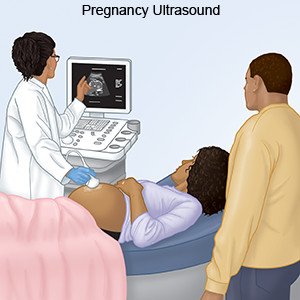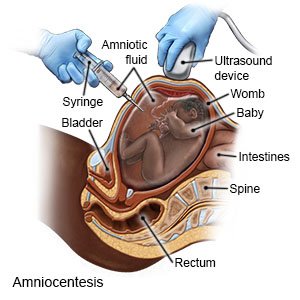Polyhydramnios
Medically reviewed by Drugs.com. Last updated on Aug 4, 2025.
Polyhydramnios is a condition that causes you to have too much amniotic fluid during pregnancy. You may need to be treated in the hospital for problems caused by polyhydramnios. You may also need to deliver your baby even if he or she is not full term. If you are discharged before your baby is born, you will need to watch for serious signs and symptoms.
WHILE YOU ARE HERE:
Informed consent
is a legal document that explains the tests, treatments, or procedures that you may need. Informed consent means you understand what will be done and can make decisions about what you want. You give your permission when you sign the consent form. You can have someone sign this form for you if you are not able to sign it. You have the right to understand your medical care in words you know. Before you sign the consent form, understand the risks and benefits of what will be done. Make sure all your questions are answered.
An IV
is a thin tube that is placed in a vein. It is used to give fluids and medicines.
Medicine:
You may be given medicine to make your baby produce less urine.
Tests:
- Ultrasound pictures are used to find the amount of amniotic fluid in the womb. The pictures may also show the baby's size. His or her kidneys and urinary tract will be checked. Moving ultrasound pictures are used to check blood flow through arteries in the baby's kidneys and through the placenta.

- Amniocentesis is a procedure used to take a sample of amniotic fluid from the womb. The fluid contains cells that can be tested for birth defects and other problems.

- A glucose challenge test is used to find the amount of glucose (sugar) in your blood. An increased amount may be a sign of gestational diabetes (diabetes during pregnancy). You will fast overnight and then drink a sweet liquid. Your blood sugar level will be tested every hour for 3 hours in a row. A high level in at least 2 of the tests is a sign of gestational diabetes.
- A fetal nonstress test is used to check how the baby's heartbeat changes when he or she moves. You will wear a device on your abdomen. The device measures your baby's heart rate. You may need to eat or drink something to make your baby more active.
- A biophysical profile is a test that checks the baby's breathing and movement. It also checks for the amount of amniotic fluid in the womb.
Treatment:
- Amnioreduction is a procedure used to remove extra amniotic fluid.
- Medicine may be given to reduce the amount of urine your baby produces.
- Delivery may be recommended if your baby is close to full term.
RISKS:
Your water may break early, and your baby may be born prematurely. He or she may grow more than expected. The placenta may pull away from the womb before delivery. The umbilical cord may drop into your vagina before the baby. This can prevent your baby from getting enough oxygen during delivery. You may need a cesarean section (C-section). You may have heavy bleeding after delivery.
CARE AGREEMENT:
You have the right to help plan your care. Learn about your health condition and how it may be treated. Discuss treatment options with your healthcare providers to decide what care you want to receive. You always have the right to refuse treatment.© Copyright Merative 2025 Information is for End User's use only and may not be sold, redistributed or otherwise used for commercial purposes.
The above information is an educational aid only. It is not intended as medical advice for individual conditions or treatments. Talk to your doctor, nurse or pharmacist before following any medical regimen to see if it is safe and effective for you.
Further information
Always consult your healthcare provider to ensure the information displayed on this page applies to your personal circumstances.
